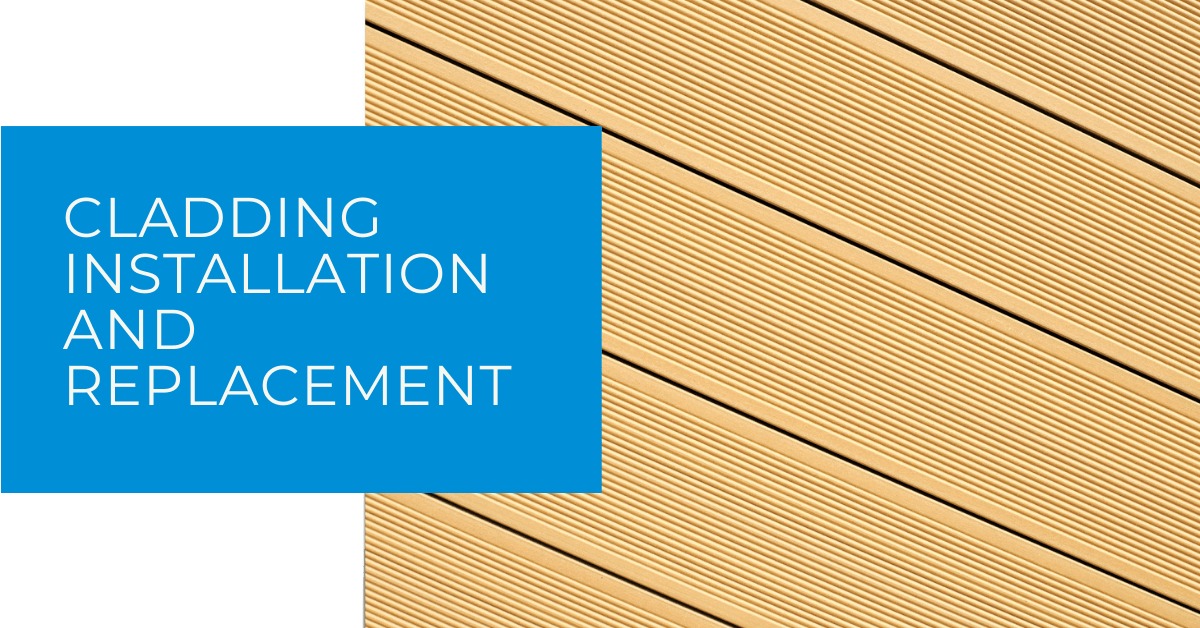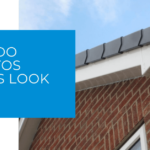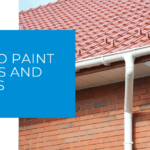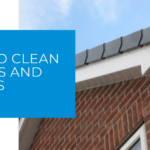It is important to know the benefits of using cladding. Cladding is often used in places where aesthetics are an issue, but it also has many other uses that can help improve your property value. It can be used for buildings, patios, walkways and more.
The installation process will differ depending on what type you use and how complicated the project is. This guide will provide information about the different types of cladding available as well as step-by-step instructions for installing or replacing them on your property!
Contents
What Is Cladding?
Cladding is a material that is installed on the exterior of a building for protection and decoration. It can be made from many different materials, but most often it is composed of metal, plastic, or wood.
There are many benefits to using cladding. Not only does it improve the aesthetics of your property, but it also provides insulation and weatherproofing. This can help you save money on energy costs in the long run!
Additionally, cladding can add value to your home or business. If you ever decide to sell, having cladding installed will make your property more attractive to potential buyers!
What Are the Different Types of Cladding?
Metal Cladding
Metal cladding can be made from aluminum, zinc, or steel. It is a great option for protecting your building and adding value to the exterior because it does not require any additional maintenance other than an occasional wash.
Plastic Cladding
Plastic cladding typically comes in sheets that are pre-formed into different shapes such as triangles or squares. They can also come as panels which will make installation easier on large surfaces like walls!
Wood Cladding
This type of material has been used for centuries due to its traditional appearance and durability. However, wood must be maintained by regular staining and varnishing so it doesn’t rot over time.
What Are the Benefits of Cladding?
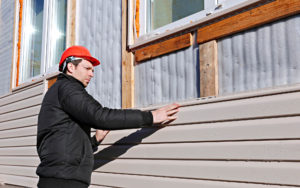 Cladding can be made from a variety of materials that offer different benefits depending on how you choose to use it.
Cladding can be made from a variety of materials that offer different benefits depending on how you choose to use it.
Metal cladding is great for protecting buildings and adding value because it does not require any maintenance other than an occasional wash! It will also add insulation and weatherproofing, which means lower energy bills in the long run!
Plastic cladding is perfect if you want something more aesthetically pleasing like panels or shapes such as triangles or squares. They come pre-formed so installation will be easier when compared to wood cladding, but plastic must be maintained with regular staining and varnishing to prevent rotting over time.
Wooden cladding has been used for centuries due to its traditional appearance, durability, and low cost. However, wooden cladding must be maintained with regular staining and varnishing to prevent rotting.
How to Install Cladding
The installation process for cladding will differ depending on what type you choose and how complicated the project is. This guide will provide information about the different types of cladding available as well as step-by-step instructions for installing or replacing them on your property!
For metal, plastic or wood cladding:
If you are using pre-formed panels or shapes such as triangles or squares, installation is a breeze! Simply measure the area that needs cladding, cut the pieces to size and attach them using either screws or nails. If you are using wooden cladding, it’s important to make sure that all of the boards are straight before nailing them in place. Use a spirit level to help ensure accuracy.
For metal cladding, you will need to use a drill to make holes in the areas that you want to attach the cladding. Make sure that the drill bit is slightly smaller than the screws or nails that you are using so they fit snugly into the hole.
Once all of the pieces are in place, go over them with a sealant or paint to protect them from weathering and fading.
How to Replace Cladding
If you are replacing existing cladding, it’s important to remove all of the old material before installing the new. Use a hammer and chisel to loosen any nails or screws that are holding it in place. If there is any adhesive on the surface, use a solvent to remove it.
Remove the old cladding by pulling off any loose pieces and cutting out anything too hard to pull or rip away. Use a scraper if needed for stubborn parts of the existing cladding that won’t come up with just your hands! Be careful when removing wooden panels because you don’t want them cracking and splitting as this will leave holes in which water can get into your building, causing damage over time!
Once all of the old material has been removed, use sandpaper on protruding nails or screws so they are flush with the surface before installing new cladding materials.
How Much Does It Cost to Replace Cladding?
The cost to replace cladding in the UK can vary depending on the type of material that you choose and how complicated the project is. For a basic wood cladding installation, it will cost between £500-£2000.
If you are using more complicated shapes or panels, the price will be higher. Metal cladding can be more expensive than plastic or wooden cladding, with prices starting at around £4000.
Replacing existing cladding can be cheaper if you already have some of the materials needed on hand. However, most people end up spending around £1000 for a complete replacement job. This price includes labour as well as all of the materials needed!
Tips for Choosing a Cladding Installation Company
When looking for a cladding installation company, it’s important to make sure that they have experience with the type of material that you are using. Ask to see photos of their previous work and read reviews from past clients.
It’s also important to get quotes from multiple companies before deciding on one. This will help ensure that you are getting the best price possible!
FAQs about Cladding Installation and Replacement
What is the best type of cladding to use for my property?
This will depend on your budget, the style of your property, and what material you want to use. Metal, plastic, and wood are all popular choices for cladding materials!
Can I install cladding myself?
It’s possible to install some types of cladding yourself, but it’s always a good idea to get a professional to do the job if you’re not sure what you’re doing!
How much does it cost to replace cladding?
Replacing existing cladding can cost anywhere from £500-£2000, while a complete new installation starts at around £1000.
How long does it take to replace cladding?
The length of time that it takes to install or replace cladding depends on the type and amount of material you’re using, as well as whether you are doing any additional refurbishments!
Final Thoughts on Cladding Replacement
Cladding is an important part of any property, and it’s crucial to make sure that it is installed and replaced correctly! We can help you with all your cladding needs, from installation to replacement and everything in between! Contact us today for a free quote.

